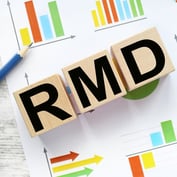Poland is an EU success story, despite the region’s financial woes, and that means the country offers opportunities for investors. However, that doesn’t mean they shouldn’t be wary of possible pitfalls, since they litter the path of progress.
While the rest of the eurozone struggled under austerity measures during the financial crisis, Poland was lucky. Government actions taken in the wake of the collapse of communism, together with the country’s entry into the European Union in 2004, had started its economy on the road to growth.
Thanks to a constitutional clause that prohibited its debt-to-GDP ratio from exceeding 60%, it had a lower level of public debt than many other European countries at the onset of the crisis. Thus, far less overextended than many of its neighbors, Poland was able not just to weather the crisis but, fueled by an injection of cash from the EU, even continue to grow its economy.
Poland was the recipient of an influx of funding from the EU under the latter’s 2007–2013 budget, receiving 101.5 billion euros ($137.9 billion). Then the country was chosen, along with Ukraine, to be a host for the 2012 European soccer championships. And that steered government spending toward improvements that the country sorely needed.
The Polish government augmented its EU windfall with spending of its own as it upgraded, refurbished and built from scratch various infrastructure projects throughout the country. Everything from soccer stadiums—many of which are sorely underutilized now that the championships are over, by the way—to railroad stations, airports and highways got makeovers or were brought into being, spurring domestic consumption and stimulating further development.
That spending, at a time when other countries were tightening their belts, gave Poland an edge that has helped it to grow despite economic troubles throughout the rest of the region. The country has attracted business investment from Germany, with numerous smaller businesses seeking out Poland as a place where the competition is less keen and there is room to grow.








 January 15, 2014 at 08:20 PM
January 15, 2014 at 08:20 PM











